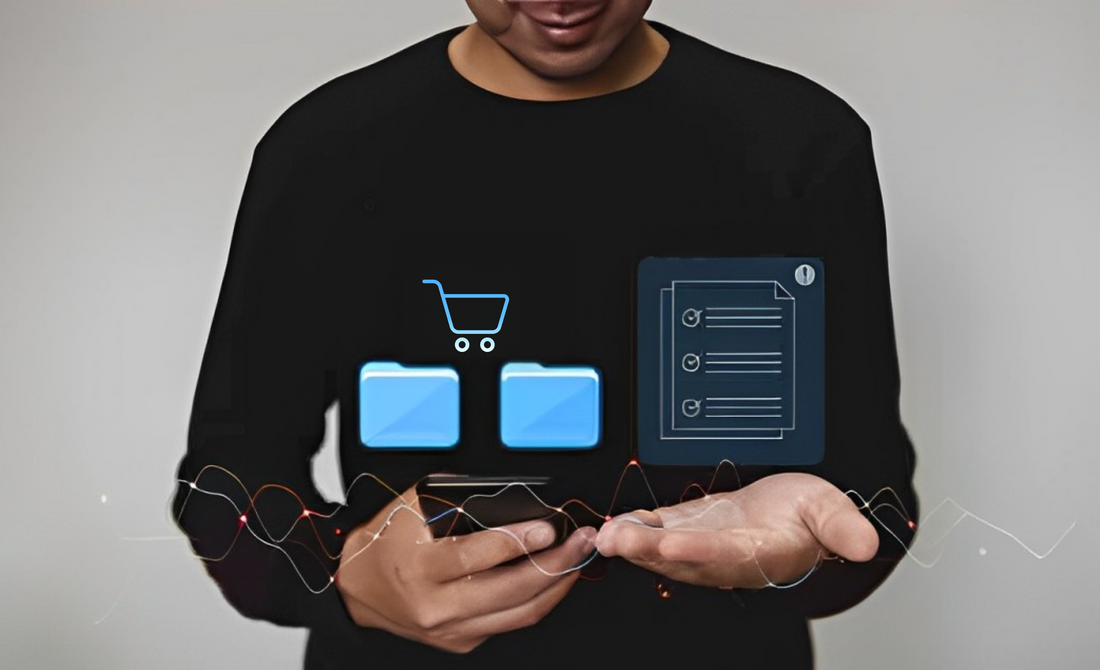A Complete Guide to Using Zero-Party Data for Shopify Success

You want to collect data for your ecommerce store but how do you do that?
If your answer is through third-party apps, well let's give you a heads up that you are way behind the new trends.
With the development of strict privacy laws and data collection, buying consumer data is too outdated. If you want to deliver more customization with your Shopify store, it is high time that you shift towards ethical data collection.
But there is only one issue.
It is not a piece of cake to convince your consumer to sit down and give their 3 minutes of their time.
..or can you actually do that?
With the right strategies in mind, you can use zero data collection (more on this below) to increase brand awareness as well as build loyalty.
A Basic Understanding of Zero Party Data
To define simply, zero data is any time of information that is willingly given by your consumer. Thus they are considered highly reliable and accurate.
Unlike depending on third party sources where data is collected without direct consent, your target market consciously shares their needs and expectations with your Shopify store.
The biggest advantage of zero party data is that it eliminates any form of guesswork. It allows you to frame your marketing strategies as per your customers’ wants and demands thus giving the best results.
As Shopify experts, we can safely say that by switching to a zero data approach, you are gearing up your store for long term success.
|
Point of difference |
Zero-Party Data Collection |
Third-Party Data Collection |
|
|
Definition |
Data that a customer willingly shares with a business |
Data collected by external companies, often without direct input from the customer |
|
|
Data source |
Directly from the customer |
From third party sources such as data brokers or tracking cookies |
|
|
User consent |
Voluntary |
Lacks clear consent |
|
|
Data accuracy |
Highly accurate as directly shared by the consumer |
Less accurate due to assumptions or lack of information |
|
|
Types of data collected |
Preferences, interests, purchase intentions, and feedback |
Behavioral data, browsing habits, demographic information |
|
|
Privacy compliance |
High compliance, as it involves direct consent |
Can be challenging to stay compliant with privacy regulations like GDPR and CCPA |
|
|
Trust factor |
Builds strong trust |
May reduce customer trust |
|
|
Usage |
Personalized marketing, product recommendations, and loyalty programs |
Ad targeting, remarketing, analytics |
|
|
Data lifespan |
Can be long-lasting with ongoing customer engagement |
Variable, as data may be aggregated, outdated, or no longer relevant |
|
|
Cost |
Minimal or no cost |
Often involves cost for purchasing or licensing data |
Benefits of Adopting Zero Party Data Collection for Your Shopify Store
As per recent reports, 75% of the global population will have their data covered under privacy regulations.
With the phasing out of third party apps by Google, privacy policy updates by Apple, and tighter laws against private data collection, zero party data collection will help to build transparency and trust among your customers.
Calling for ethical data collection is not only a preventive measure, but it offers a range of other lucrative opportunities such as:
Customization
Accurate data collection offers better opportunities for personalization and segmentation. You have the power to tailor your marketing campaigns as per your user’s demands thus bringing in tangible results.
Personalizing customer experiences can cut acquisition costs by up to 50% and boost revenues by 5% to 15%.
Offers transparency
When you ask your customer to fill out a form, they know they are being surveyed for improving their user experience. This level of transparency plays a crucial role in building brand trust, with over 90% of consumers reporting that it influences their purchasing choices.
Builds trust
When customers trust your brand, buying from you becomes second nature. They’re confident in your product’s quality, which encourages repeat purchases and fosters a lasting relationship. In fact, 81% of consumers consider brand trust a deciding factor in their buying choices.
And you know the best part?
You have the entire control over this data. It allows you to better manage information and reinforce your commitment to security and transparency.
Top 4 Strategies To Collect Zero Party Data For Your Shopify Store
Collecting zero party data from your user is easy. All you need to have is the right set of questions and clever strategies in place to get the information that you want.
Today we will discover the top 4 methods to collect zero data.
But make sure that whatever method you choose, it helps you to sell your product.
For instance, if you’re selling eco-friendly clothing, consider asking:
“What features matter most to you when choosing sustainable fashion?”
And avoid less relevant questions like:
“Do you enjoy watching reality TV?”
#1 Build post purchase surveys
If there is one strategy that you definitely need to bank on, it is the post purchase survey.
Why?
Well, it allows you to take advantage of the recent engagement that the user had with your brand.
Asking questions that collect information about your consumers' likes, hobbies, and habits will improve their purchasing experience and give insightful information. Here are a few instances:
- "What brought you to our brand initially?"
- "How much does fast shipping matter to you?"
- "Were there other brands you considered before choosing us?"
- "Is this purchase a gift or for personal use?"
These enquiries uncover sincere opinions when consumers are still thinking about your brand. This period of time, which is frequently referred to as the "golden hour" of post-purchase engagement, is perfect for understanding the reasons behind consumer purchases.
But think about offering loyalty incentives if your clients aren't answering your surveys. Offering them incentives like cash back or store credit for their involvement not only demonstrates gratitude for their input but also fosters a win-win relationship that increases brand loyalty.
#2 Use methods like polls and quizzes
In terms of customer engagement, interactive marketing is really powerful. Interactive content turns your audience from passive viewers into active players by inviting them to participate, in contrast to a typical, static post.
This involvement is essential since it creates an immersive, memorable, and engaging experience.
Beyond being fun, interactive elements offer a practical benefit: they allow you to gather valuable zero-party data directly from your audience. Throughout your customer journey, include surveys, polls, and quizzes to keep your audience interested and discover more about their preferences.
Examples to try:
Welcome Test: Include a brief questionnaire for new users and give them a discount according to their preferred style.
Checkout Survey: To entice customers to provide feedback after making a purchase, use a quick survey that offers loyalty points.
Product Feedback Poll: Use social media to ask for opinions from your audience about prospective product releases or new packaging designs.
Incorporating these interactive features early in the client journey allows you to generate an opt-in for email or SMS notifications in addition to gathering personal information.
A quiz or poll that doubles as a sign-up form can be a clever, engaging way to grow your subscriber base while giving customers a personalized welcome to your brand..
#3 Encourage profile completion with exclusive rewards
One effective strategy to collect zero-party data is to provide incentives to clients who finish their profiles. This approach is a win-win for both you and your customers—you gain valuable insights for building a personalized shopping experience, and customers enjoy real rewards that make it worthwhile.
Here’s how it can work:
Reward with Discounts: Give consumers who give information, such as their preferred product categories, a $5 discount.
Special Benefits for Customisation: Provide a unique product sample for completing requests for preferred colours, designs, or sizes.
These material rewards work much better at increasing engagement than simply giving out points. While points might not motivate behaviour on their own, a clear incentive can increase engagement and commitment.
Make sure that your customers are aware of these incentives to get the most impact possible. In order to promote future profile completion and encourage repeat purchases, be explicit about the reward details on post-purchase pages or in follow-up emails.
#4 Organize virtual scavenger hunts and contests
Looking for a creative approach to gather zero party data?
Turn shopping into an exciting adventure by organising a virtual scavenger hunt! This strategy works especially well when a new product is being introduced. Provide participants with special rewards to encourage them to provide information about their hobbies and preferences.
Invite customers to submit their preferences as part of the entry process for giveaways as well. This will increase customer involvement and gather useful data.
Final Thoughts
Leveraging zero-party data collection is a powerful strategy for enhancing customer engagement and tailoring the shopping experience. By getting data straight from customers, you can build loyalty and trust while also learning important things about their preferences.
For example, imagine launching a new line of eco-friendly products. You can get detailed information about your consumers' sustainability preferences, such as whether they value recyclable packaging or products sourced ethically, by using a post-purchase survey. By highlighting the qualities that are most important to your audience, you can use this information to customize your marketing campaigns and eventually increase sales.












